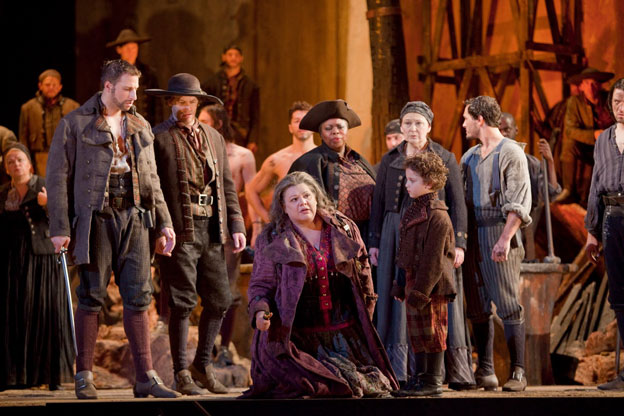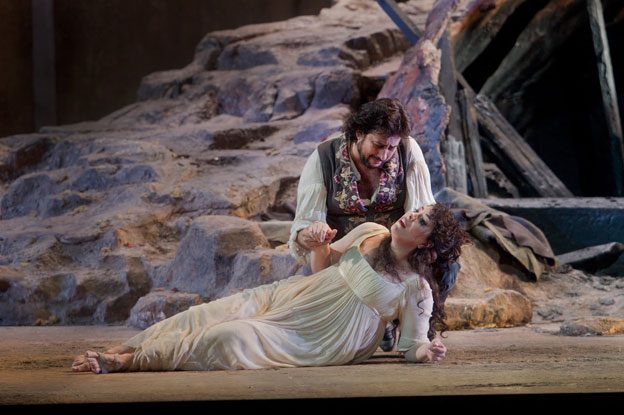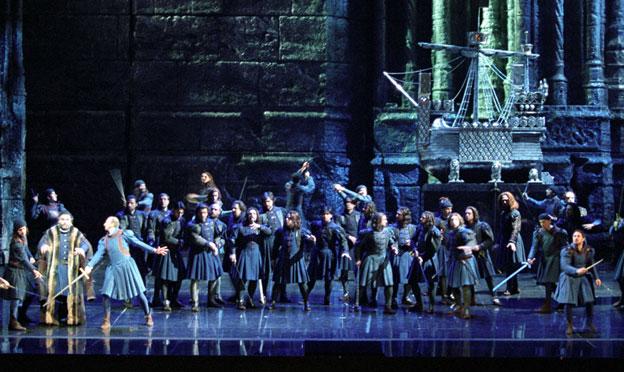Background
Il Trovatore took a long time coming from its original conception in 1850 through to its eventual performance in early 1853. This four act opera was based on a play by Antonio Garcia Gutierrez from 1836 called El trovador. The project was delayed as a result of various factors, including other projects, events in Verdi's personal life, and the premature death of librettist Salvadore Cammarano.
Communication had begun with Cammarano in 1850, when Verdi, having seen the play, El trovador, expressed an interest in developing this into an opera. Part of the attraction was that the play included notably strong female roles with unique characteristics, such as the gypsy woman. This uniqueness carried through in to some of Verdi's written requests to Cammarano, in that he wanted to eschew traditional operatic forms such as duets, choruses and finales.
However, both the illness of Verdi's parents and his estrangement from his mother, father and father-in-law delayed the project. Having been formally commissioned to go ahead with the project by the Venetian authorities in Spring 1851, Verdi didn't begin the composition process until the March of the following year. Four months later, Verdi learned of Cammarano's passing. In the end, the opera was completed with the help of Leone Emanuele Bardare, who made revisions and modifications under Verdi's guidance.

First Performed
19th January 1853, Teatro Apollo, Rome
Notable Performances
23rd December 1854 – Salle Ventadour, Paris, France
2nd May 1855 – Academy Of Music, New York, United States of America
10th May 1855 – Covent Garden, London, UK
Characters
Leonora – A duchess, in love with Manrico, an army officer
Manrico – Army officer of the troops of the Prince of Urgel
Azucena – Gypsy woman, the adoptive mother of Manrico
Count di Luna – A nobleman, employed by the Prince of Aragon
Ferrando – Officer to the Count di Luna
Ines – Friend and confidante to Leonora

Plot
In 15th century Spain, in a guard room in the Castle of Luna, guard captain Ferrano is keeping his men alert with a potted history of the castle's master, the Count di Luna – a man in love with noblewoman Leonora (who herself is in love with an army officer and a troubadour called Manrico).
Ferrano tells of how, in the past, a gypsy was accused of bewitching the youngest di Luna child. The gypsy was subsequently captured and burnt at a stake. In her last lucid moments, the gypsy told her daughter, Azucena, to avenge her. Azucena was said to have kidnapped the child, although among the remnants of the fire were not only the gypsy woman, but a child. Refusing to believe the worst, the father of the di Luna child commanded his eldest son, the Count di Luna, to hunt Azucena and bring back his youngest. In fact, the young victim was Azucena's own child, a victim of Azucena's overwhelming horror at the grisly, protracted death of her mother. Since then, Azucena has acted as adoptive mother to Manrico, who treats her as if she was his own flesh and blood.
As Ferrano tells of the di Luna history, the object of the Count's desires, Leonora, talks with her confidante, Ines, about her love for Manrico. Manrico himself enters Leonora's room and embraces her – just as a jealous Count storms in, challenging the troubadour to a duel. Manrico wins the duel but is mysteriously prevented from taking the Count's life by an ethereal force.
Manrico learns that Leonora is planning to enter a convent for the rest of her life. The Count has also learned of Leonora's wishes, and devises a plan to kidnap her as she prepares to take the veil. However, Manrico rescues Leonora and take refuge at a fortress. The Count, however, seems to hold all the cards, when Azucena is captured. Recognised as the kidnapper by Ferrano, the Count prepares to subject Azucena to the same fate as her mother.
Manrico learns of Azucena's capture and launches an ill-fated attack, which results in his imprisonment. Leonora begs for Manrico's life – even to the point where she promises to give herself to the Count. Sensing no way out, Leonora poisons herself, later telling the imprisoned Manrico that she would rather die than be with anyone else but him. Having heard Leonora's dying confession, the Count orders Manrico's execution. Azucena tries to halt the execution, but to no avail. It's also too late for the Count to realise his folly – he has killed his own brother, leaving Azucena to cry out that her mother has finally been avenged.
Review
The plot of Il Trovatore (The Troubadour) has prompted some mixed reactions. Some have questioned some aspects of the plot, which sees a woman throw her own baby into the fire, and two unassuming brothers unaware of their relationship at each other's throats. Nevertheless, this Verdi opera offers a full-blooded example of tragic melodrama at its finest.
Il Trovatore contains a number of typically tragic elements. Azucena loses her mother, her baby and also her adopted son in gruesome circumstances. And of course, the Count di Luna endures the greatest tragedy of all – the execution of Manrico (as a result of Leonora's choice to kill herself rather than be with him) results in dramatic irony in that he kills his own brother without realising it. The fourth act's Prima che d'altri vivere brings all four of the main protagonists together, singing ahead of their own personal downfalls and tragedy.
For such a melodrama boiling with passion and revenge, Verdi's music is vibrant and bombastic for the most part, propelling the action along on all cylinders. The horror of the fate of Azucena's mother is recalled in dramatic pieces such as Di quella pira, which memorably brings home the grisly nature of this terrible death.
However, there are times when Il Trovatore gently pauses for reflection, notably in pieces such as Count di Luna's second act cavatina, Il balen del suo sorriso, which marries gentle woodwind sound (to signify his love for Leonora) with a dramatic swell of orchestration to equate with the storm that he feels in his heart before the woodwind comes in again to calm that storm.
It's clever contrasting that is also heard in Tacea la notte placida, a mix of a light waltz and foreboding rhythm, signifying the romantic aspects of the plot. These will always go hand in hand with its darker aspects, and Verdi creates an aural juxtaposition of the two contrasting tones. Leonora's D'amor sull'ali rosee is a great example of a swelling love aria, a great centrepiece moment for Leonora. Verdi wanted an opera that showcased notable female characters, and Il Trovatore brings out different kinds of love for both Leonora (her devoted passion to Manrico) and Azucena (her motherly love for Manrico and a desire to avenge her mother and acknowledge her last dying wish).
It's a strong example of Verdi's musical talents to exploit the drama unfolding on the stage. Memorably combining romantic drama and tragedy, Il Trovatore succeeds admirably.









